
Lot 93
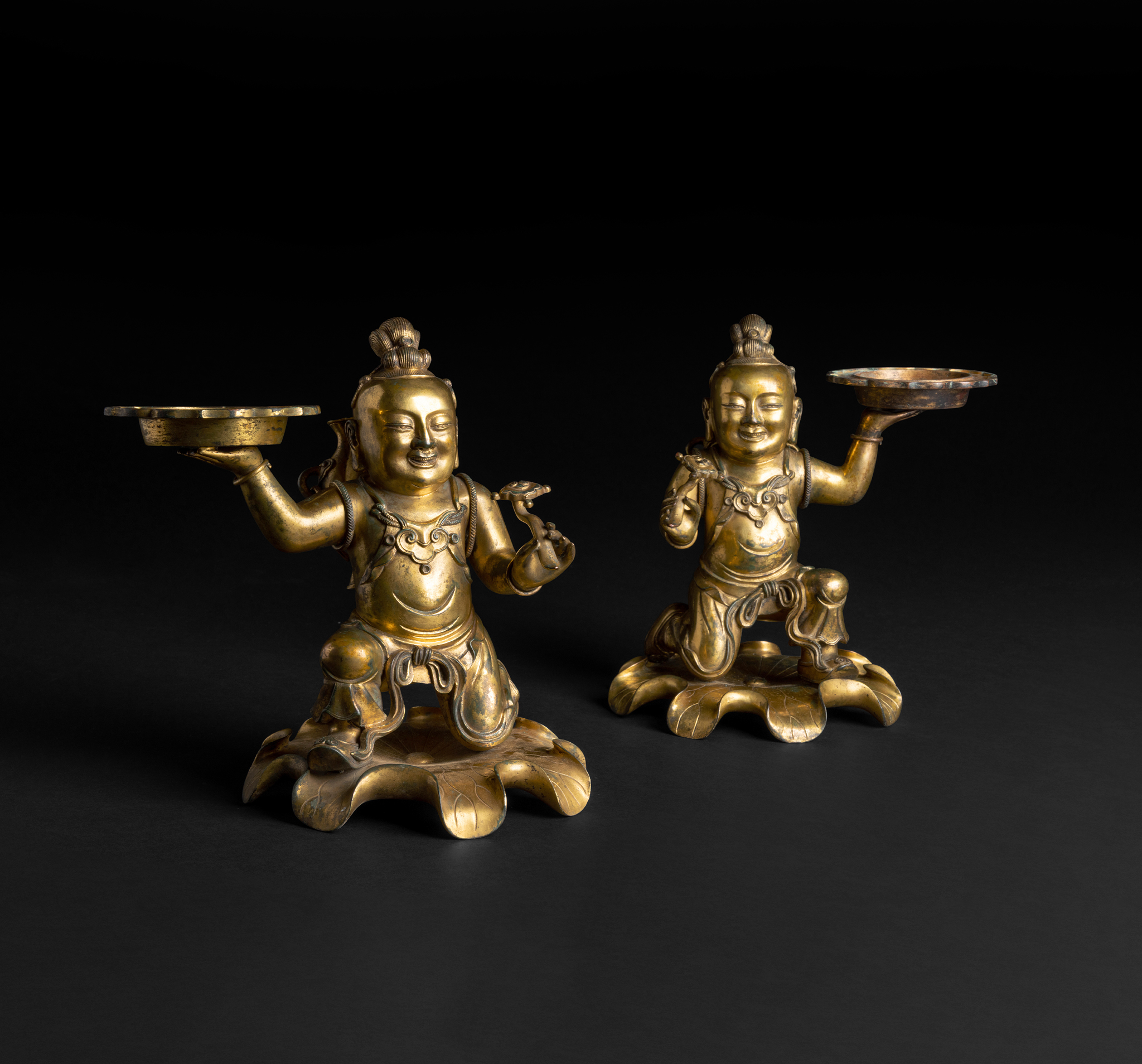
RARE PAIR OF CHINESE 'HEHE' TWIN BOYS GILT BRONZE CANDLE HOLDER ‡
QING DYNASTY, QIANLONG MARK AND OF THE PERIOD
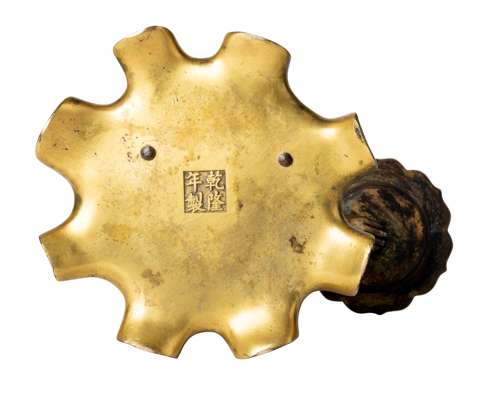
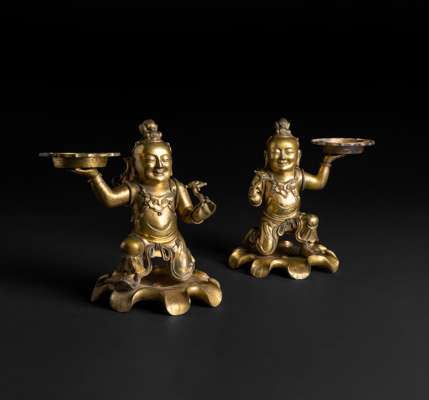
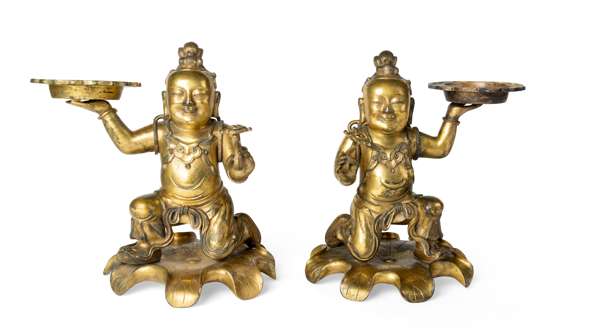
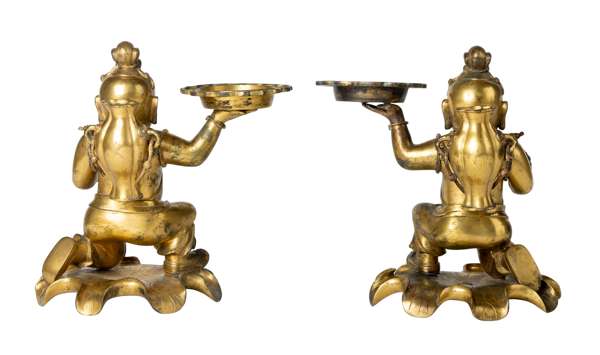






Auction: 07 November 2025 from 10:00 GMT
Description
清乾隆款及年代 銅鎏金和合二仙燭台(一對)
each boy modelled kneeling on one knee above a large lotus leaf, one arm raised holding up a foliated-rim shallow plate as candle holder, the other hand holding a ruyi sceptre in front of his chest adorned with a large ruyi-head pendant, the rounded head with animated expression and smiling mouth open below the fleshy cheeks, the wide arching brows framing the slender eyes, all between fleshy earlobes and below the hair fastened with ribbons into high chignon, carrying a large foliated vase on his back with rope tight crossing both shoulders, the base finely carved with a four-character Qianlong mark in a recessed square (2)
Dimensions
each 22cm high; 6.6kg
Provenance
Formerly in a private American collection
前美國私人收藏
Footnote
Twin boys in China are highly auspicious and represent the traditional aspiration for many sons and grandsons. They were often depicted on objects presented at weddings and birthdays conveying the wish for happiness and the safe arrival of many descendants. A comparable pair of cloisonné enamel and gilt-bronze 'hehe' twin boys of similar form, dated to the Kangxi period, was sold at Sotheby's New York, 18 September 2007, lot 156. The comparable example was possibly made as a tribute item to win favor from the emperor, hence the figures kneeling respectfully with their arms stretched forward in the pose of presentation.
中國傳統文化中,「童子」寓意吉祥,象徵多子多孫之願。此題材常見於婚慶與壽禮器物上,用以祝頌喜慶、延綿子嗣。可比較一對造形相近之清康熙銅胎掐絲琺瑯「和合二仙」童子像,2007年9月18日售於紐約蘇富比,拍品156。該例或為進貢清宮之禮器,以求博取帝心,故塑像中童子雙膝跪地,雙臂前伸,呈獻物之姿,寓恭敬奉進之意。
Reduced rate of 5% import VAT payable on the hammer price









